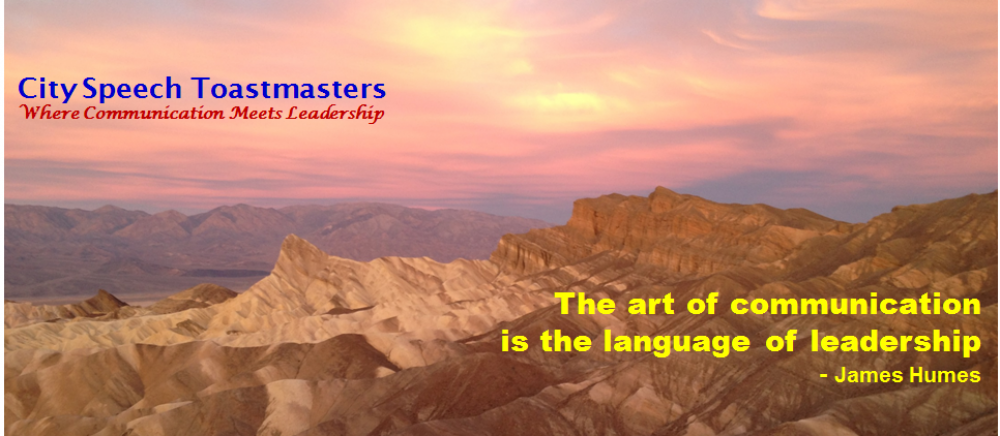By Jeffrey Young, ACB, ALB, Area I-33 Director
Disclaimer: I do not ever think I’m a perfect speaker. But I’ve had a lot of things to say over the years, and so I’m writing from personal experience rather than being an expert. We always have room to grow as speakers no matter if we’ve been doing it for one day or one thousand days.
It’s not often I completely flub a Table Topic, but it still happens – like at the meeting on March 9, where I took on the role of a sportscaster in my own life and managed to fall over my tongue while sticking my foot in my own mouth. Not my finest moment, for sure. I wanted something that would resonate with the audience, and instead I wound up with reso-naughts. So naturally, I’m going to write about it.
Writing a resonating speech is all about relating to the audience in a way that they relive an experience with you.
The /Memory Story/ is a powerful tool in speeches. If you can lay out your story in a way that connects to your audience, you create an emotional bond that can captivate an audience’s imagination and transport them in a tiny time machine of your own making to wherever you were at that time.
Following the Rule of Threes (‘put up three ideas’ for your article or speech), I’m going to relate the Three Requirements of Resonating Recollection:
- Figure Out Your Flow First, Followed by First Looks
When I have a ton of ideas in my head all fighting to get out, each one of them wants to be first. Toastmasters teaches us to Organize Our Ideas before saying a word, and that was my first mistake. Today’s Table Topics Master gave us a gift – a format of opening and closing that we could follow, and all I needed to do was fit my story in the middle. If you don’t have that format, figure out a solid opening framing line that indicates that a story is in the works, even if it’s the tried and true ‘Once upon a time…’ which I’ve actually used in a speech before.
The Sportscaster persona I was using could have laid out the picture a little bit better – ‘an uneven 12 on 12, mano a mano knockdown dodgeball competition and battle of the sexes.’ Describing each team in greater detail, talking about the team Captains, that sort of thing. Maybe I could have explained briefly the rules of Dodgeball as well.
- And then… Action
Once you’ve taken your audience to the place where your adventure happened, it’s time to describe the events that made it memorable as more than just a place you went. What happened to you that you want to share? What emotions did you feel? Were you alone? Or were you helped or hindered by your traveling companions?
In my case, I could have talked about how the boys were acting all superior and how their first few throws sent the girls scattering into the corners. But then, the girls’ champions started turning the tables with that first catch of the dodgeball…
- Engage Everyone’s Emotions
This is the tough part. The emotional value – that intangible thing that makes or breaks an inspirational speech. The ability to use vocal variety and words and emotes to get everyone to –feel- a –feeling- you want them to feel, be it hopeful, angry, sad, frightened… How do you add it? The easy answer is to re-live the moment in your words and actions.
“It’s a massacre, folks! The boys are suffering a massive upset and man, they are upset as they walk off the court with their heads down. The girls are fighting mad and oh! There goes the last guy who could throw down with the girls, because he threw it right into the clutches of the girl’s team captain, Cathy Sivio! The boys have one player left, and he’s absolutely tiny, and he looks utterly terrified! It’s the Girl Goliaths versus David! He’s so small they can’t hit him as he throws himself across the room, heedless of his own safety! I think his name is Jeff, and he puts the Dodge in Dodgeball! Look at him go! Cathy throws at him and misses by a county mile! His problem is he can’t throw worth anything because the ball is bigger than his head…. Who will win?” “Oh, the ref is stopping the match! He’s not going to give the kid a fighting chance… someone throw a flag on the ref or something, because that scrappy kid sure looked like he wanted to go down fighting… such a disappointment…”
That was the Table Topics answer I would have delivered if I’d had the chance to slow down and think about it further, but hey, hindsight is everything.
When it comes to a speech, all it really takes is to expand out this format into something longer, and with a life lesson to go with it, and maybe a joke or two, and you’ll have a winner eight times out of ten. The other two times, you’ll get upstaged by a better story, or you’ll forget half your story in the middle. I’ve been there, too….
